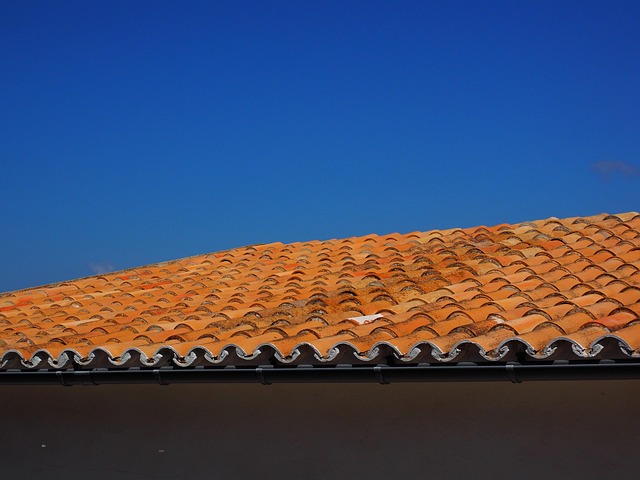Torch-applied bitumen membranes represent a cutting-edge solution for roof leak prevention systems, offering enhanced durability, superior weatherproofing, and robust bond strength. By fusing these membranes with substrates using open flames, a seamless waterproof barrier is created that effectively prevents water intrusion—a leading cause of leaks. This technology, with its tear and puncture resistance, excellent thermal stability, swift installation, and adaptability to complex roof geometries, provides cost-effective protection for both residential and commercial buildings, extending roofing lifespans and reducing maintenance needs in diverse climates and architectural settings. Installation requires strict adherence to best practices, including substrate preparation, consistent torching, proper overlap, and regular inspection, with successful real-world applications showcasing significant energy savings and reduced leak incidents.
“Discover the transformative power of torch-applied bitumen membranes in revolutionizing roof leak prevention systems. This comprehensive guide explores their unique benefits, from enhanced durability to superior protection against water intrusion. Learn how these innovative materials, applied with precision, can significantly extend the lifespan of roofs while ensuring structural integrity. We’ll delve into installation best practices, real-world case studies, and the science behind their durability, offering a definitive resource for professionals seeking robust solutions.”
Understanding Torch-Applied Bitumen Membranes: A Comprehensive Overview
Torch-applied bitumen membranes are advanced roofing solutions designed for superior durability and protection against roof leaks. Unlike traditional application methods, this innovative technology involves the use of an open flame to fuse the bitumen directly onto the substrate material, creating a seamless, waterproof barrier. This process enhances the membrane’s adhesion to various surfaces, ensuring long-lasting performance even in challenging environmental conditions.
These membranes are a game-changer in the roofing industry, offering enhanced resistance to tears and punctures, as well as excellent thermal stability. The application process is swift and efficient, reducing installation time and labor costs. Moreover, their ability to seal complex roof geometries makes them ideal for both residential and commercial buildings, providing effective roof leak prevention systems that stand the test of time.
The Role of These Membranes in Roof Leak Prevention Systems
Torch-applied bitumen membranes play a pivotal role in modern roof leak prevention systems. These innovative materials are designed to enhance the durability and weatherproofing capabilities of roofs, making them an essential component in any structure’s protective barrier against the elements. By integrating these membranes, builders and contractors can significantly reduce the likelihood of water intrusion, a common cause of roof leaks.
The application process involves torching the membrane to fuse it with the underlying substrate, creating a strong, seamless bond. This method ensures that the membrane adheres tightly, preventing any gaps or weaknesses that could compromise the roof’s integrity. The result is an effective, long-lasting solution for roof leak prevention, offering superior protection against rain, snow, and other forms of precipitation, thereby extending the lifespan of roofing systems.
Advantages and Durability Enhancers: Unlocking Their Full Potential
Integrating torch-applied bitumen membranes offers significant advantages in terms of durability for various applications, particularly in construction and roofing. These advanced membranes are designed to withstand harsh environmental conditions, providing an effective barrier against water intrusion and roof leak prevention systems. Their unique application process enhances adhesion, ensuring a robust bond with substrates, which is crucial for long-term performance.
The durability of torch-applied bitumen membranes can be further boosted by incorporating specialized additives and modifications. These enhancements include improved tear resistance, better elastic properties, and increased resistance to UV rays and chemicals. Such upgrades not only extend the lifespan of roofing systems but also reduce maintenance requirements, making them a cost-effective solution for property owners and contractors alike.
Installation Best Practices for Optimal Performance
When integrating torch-applied bitumen membranes for enhanced durability, adherence to best installation practices is paramount for optimal performance. This includes ensuring proper preparation of the substrate, starting with a clean and dry surface free from any debris or existing membrane remnants. The torching process itself should be conducted meticulously, maintaining consistent heat application to fuse the new membrane seamlessly with the underlayment. Proper overlap and sealing are crucial for water barrier integrity, particularly at junctions and edges, to effectively prevent roof leak prevention systems from compromising.
For long-lasting results, it’s essential to follow recommended spacing guidelines between torching passes and allow adequate curing time. Using compatible adhesives and sealants ensures the membrane adheres firmly, enhancing overall system performance. Regular inspection during and after installation is also vital to catch any issues early on, ensuring the integrity of the roof leak prevention systems remains uncompromised.
Case Studies: Real-World Applications and Results
In real-world applications, the integration of torch-applied bitumen membranes has demonstrated remarkable results in enhancing durability and preventing roof leaks. Numerous case studies highlight successful implementations across various climates and architectural styles. For instance, in regions prone to extreme weather conditions, these membranes have proven effective in withstanding high winds, heavy snowfall, and fierce thunderstorms, ensuring structural integrity and protecting interior spaces from costly water damage.
One notable case involved a historic building’s renovation where the torch-applied bitumen membrane was used as part of a comprehensive roof repair and replacement project. The results were impressive, as the new membrane not only sealed all existing cracks and gaps but also provided superior insulation, significantly reducing energy costs. Post-installation assessments revealed a dramatic decrease in roof leak incidents, attesting to the membrane’s ability to create an impenetrable barrier against moisture intrusion—a key benefit for any property owner or manager seeking reliable roof leak prevention systems.
Integrating torch-applied bitumen membranes into roofing systems offers a robust solution for enhanced durability and superior protection against leaks. By understanding their unique properties, leveraging their advantages, and adhering to best installation practices, these membranes can significantly contribute to the longevity of roof structures. The case studies presented demonstrate their real-world effectiveness in preventing roof leaks, solidifying their position as a game-changer in the industry. Embracing torch-applied bitumen membranes allows professionals to deliver high-quality, durable roofing solutions that stand the test of time.
